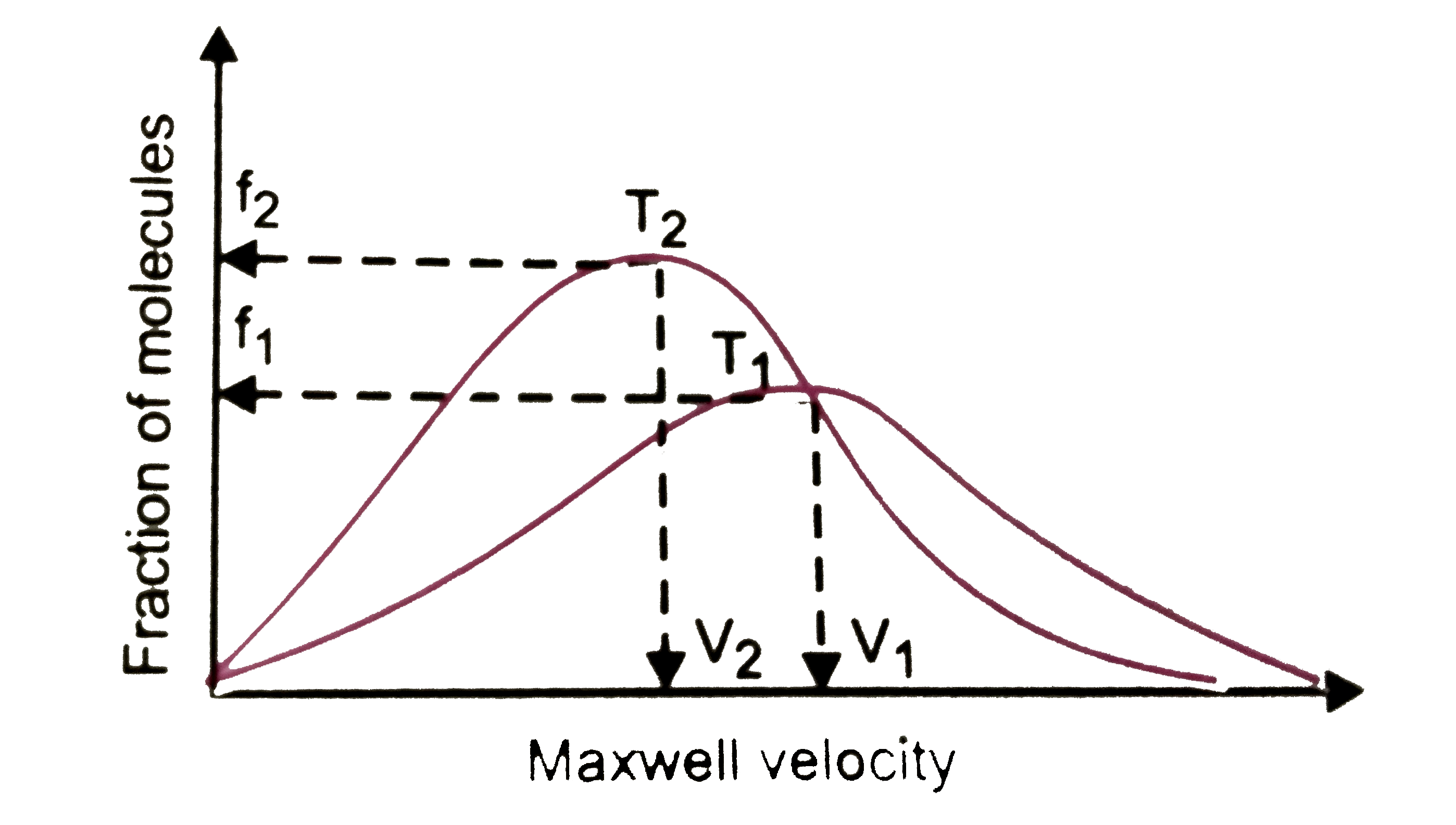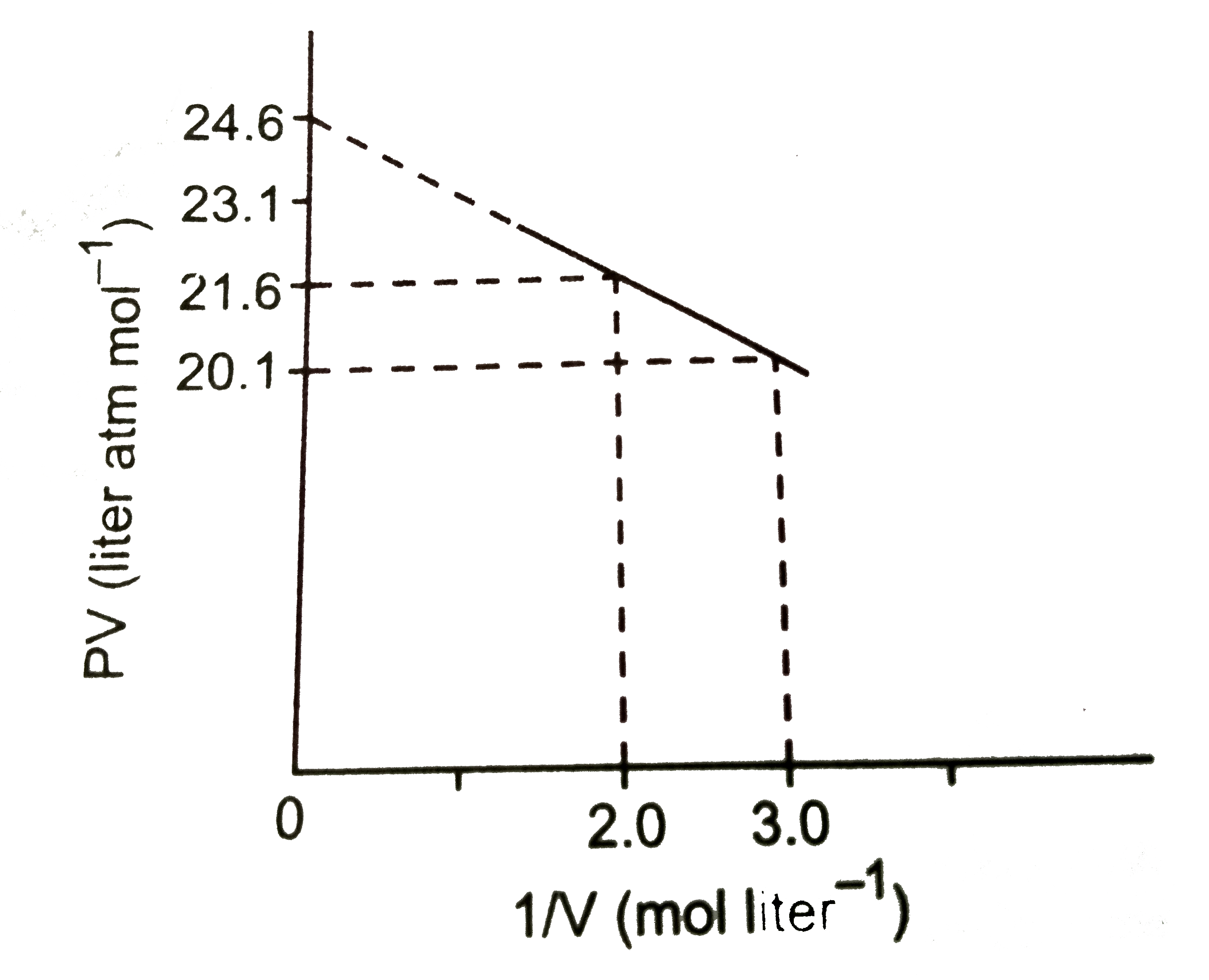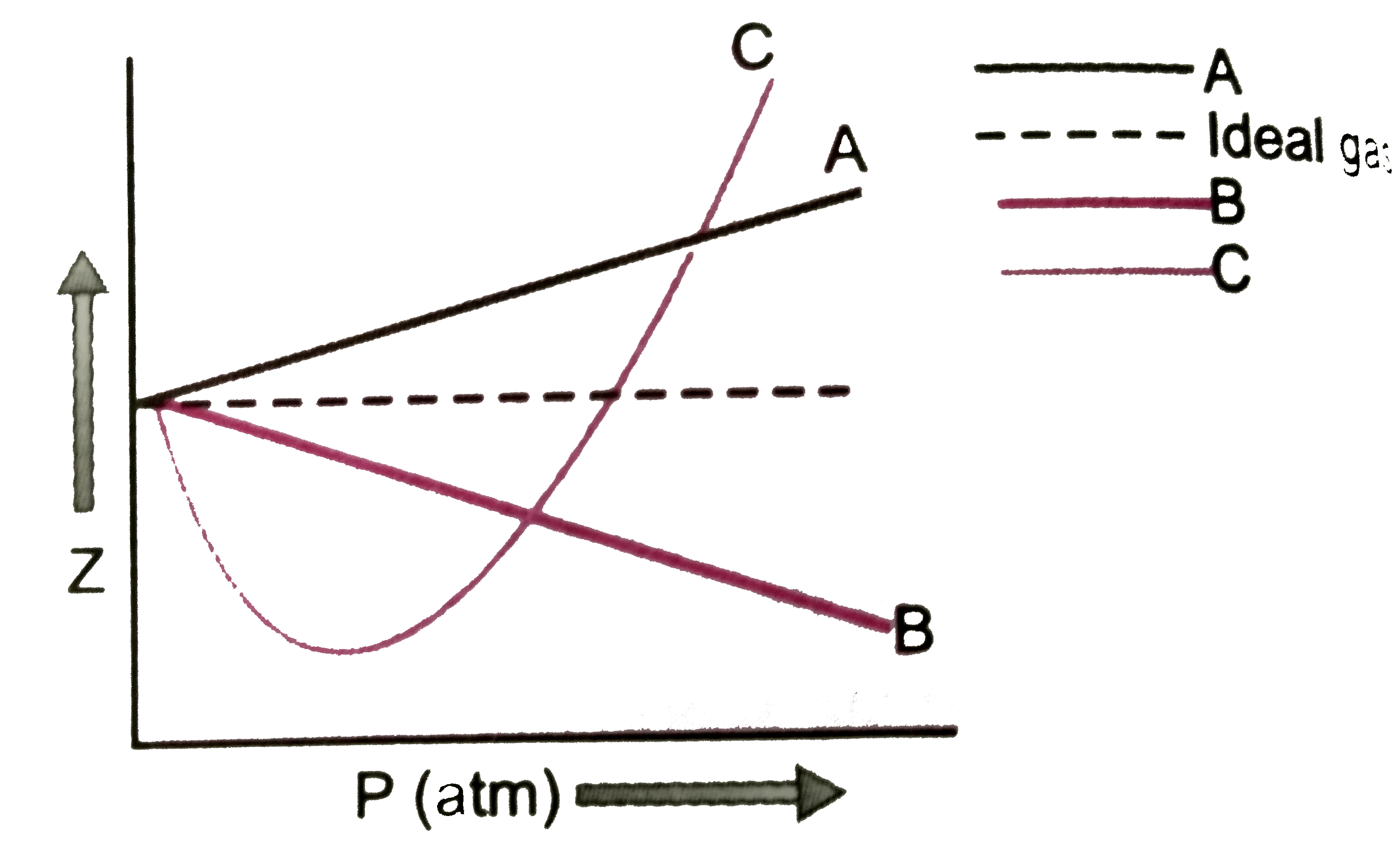VII. NUMERICAL VALUE TYPE QUESTIONS from PRADEEP CHEMISTRY (HINGLISH) STATES OF MATTER : GASES AND LIQUIDES for Class 11
| Class 11 | CHEMISTRY |
| Chapter | STATES OF MATTER : GASES AND LIQUIDES |
| PRADEEP CHEMISTRY (HINGLISH) | VII. NUMERICAL VALUE TYPE QUESTIONS |
| Medium | English |
| Academic Year | 2023-2024 |
Question 9
A J-shaped tube with smaller end closed and longer end open was taken. Mercury was added into it till the level of mercury in both the limbs was same. Volume of air enclosed in the closed end was found to be 2.4 mL. Now more mercury was added and the air enclosed in the closed ed reduced to 1.9 mL. Now, the difference in the level of the two limbs will be View SolutionQuestion 10
Some mercury is poured into a capillary tube of uniform bore and one end closed. When the tube is held horizontally, mercury column has a length of 4 cm and air enclosed in the closed end has a length of 10 cm. If the tube is now held vertically, with open end upwards, the length of the air column will be (take atmospheric pressure at the place of experiment to be 760 mm) View SolutionQuestion 55
For real gases, van der Waals' equation is written as
(P+an2V2)(V−nb)=nRT
where a and b are van der Waals' constants.
Two sets of gases are:
(I)O2,CO2,H2 and He(II)CH4,O2 and O2andH2
The gases given in set I in increasing order of b and gases given in set II in decreasing order of a are arranged below. Select the correct order from the following: View SolutionQuestion 83
Real gases show deviations from ideal behaviour. Consequently, the observed molar volume of a gas is found to be different from theoretically calculated volume from ideal gas equation. The extent of deviation is measured in terms of compressibility factor, Z. It is found that gases which can be liquefied easily show largerdeviation. Further, it is found that higher the speed of the gas molecules, less are the deviations. However, for evergy gas, there is a particular temperature above which they show ideal bahaviour over an appreciable range of pressure. This temperature is called Boyletemperature. The plots of compressibility factor versus pressure for a few gases and for the same gas at different temperatures and for the same gas at different temperatures are given below in Figs (a) and (b) respectively.The ideal gas equation has, therefore, been modified and for real gases, we apply vab der Waals equation, (P+aV2)(V−b)=RT for 1 mole of the gas.
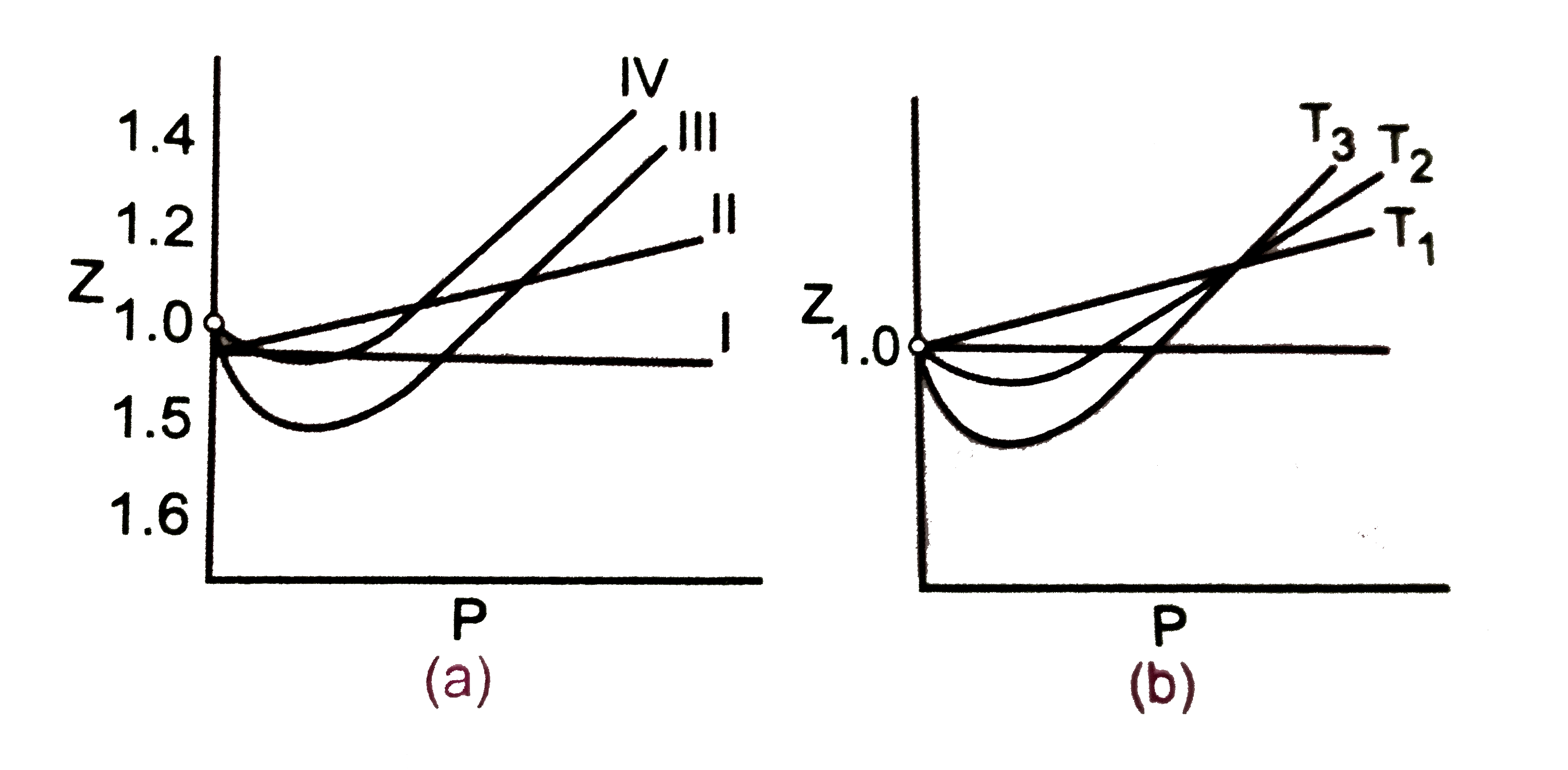
If V0 is the observed volume of a gas and Vi is the ideal gas or volume, then the compressibility factor (Z) for the gas is View SolutionQuestion 84
Real gases show deviations from ideal behaviour. Consequently, the observed molar volume of a gas is found to be different from theoretically calculated volume from ideal gas equation. The extent of deviation is measured in terms of compressibility factor, Z. It is found that gases which can be liquefied easily show largerdeviation. Further, it is found that higher the speed of the gas molecules, less are the deviations. However, for evergy gas, there is a particular temperature above which they show ideal bahaviour over an appreciable range of pressure. This temperature is called Boyletemperature. The plots of compressibility factor versus pressure for a few gases and for the same gas at different temperatures and for the same gas at different temperatures are given below in Figs (a) and (b) respectively.The ideal gas equation has, therefore, been modified and for real gases, we apply vab der Waals equation, (P+aV2)(V−b)=RT for 1 mole of the gas.
 View Solution
View SolutionQuestion 85
Real gases show deviations from ideal behaviour. Consequently, the observed molar volume of a gas is found to be different from theoretically calculated volume from ideal gas equation. The extent of deviation is measured in terms of compressibility factor, Z. It is found that gases which can be liquefied easily show largerdeviation. Further, it is found that higher the speed of the gas molecules, less are the deviations. However, for evergy gas, there is a particular temperature above which they show ideal bahaviour over an appreciable range of pressure. This temperature is called Boyletemperature. The plots of compressibility factor versus pressure for a few gases and for the same gas at different temperatures and for the same gas at different temperatures are given below in Figs (a) and (b) respectively.The ideal gas equation has, therefore, been modified and for real gases, we apply vab der Waals equation, (P+aV2)(V−b)=RT for 1 mole of the gas.
 View Solution
View SolutionQuestion 86
Real gases show deviations from ideal behaviour. Consequently, the observed molar volume of a gas is found to be different from theoretically calculated volume from ideal gas equation. The extent of deviation is measured in terms of compressibility factor, Z. It is found that gases which can be liquefied easily show largerdeviation. Further, it is found that higher the speed of the gas molecules, less are the deviations. However, for evergy gas, there is a particular temperature above which they show ideal bahaviour over an appreciable range of pressure. This temperature is called Boyletemperature. The plots of compressibility factor versus pressure for a few gases and for the same gas at different temperatures and for the same gas at different temperatures are given below in Figs (a) and (b) respectively.The ideal gas equation has, therefore, been modified and for real gases, we apply vab der Waals equation, (P+aV2)(V−b)=RT for 1 mole of the gas.

For 1 mole of gas II, the van der Waals equation reduces to the form View SolutionQuestion 87
Real gases show deviations from ideal behaviour. Consequently, the observed molar volume of a gas is found to be different from theoretically calculated volume from ideal gas equation. The extent of deviation is measured in terms of compressibility factor, Z. It is found that gases which can be liquefied easily show largerdeviation. Further, it is found that higher the speed of the gas molecules, less are the deviations. However, for evergy gas, there is a particular temperature above which they show ideal bahaviour over an appreciable range of pressure. This temperature is called Boyletemperature. The plots of compressibility factor versus pressure for a few gases and for the same gas at different temperatures and for the same gas at different temperatures are given below in Figs (a) and (b) respectively.The ideal gas equation has, therefore, been modified and for real gases, we apply vab der Waals equation, (P+aV2)(V−b)=RT for 1 mole of the gas.
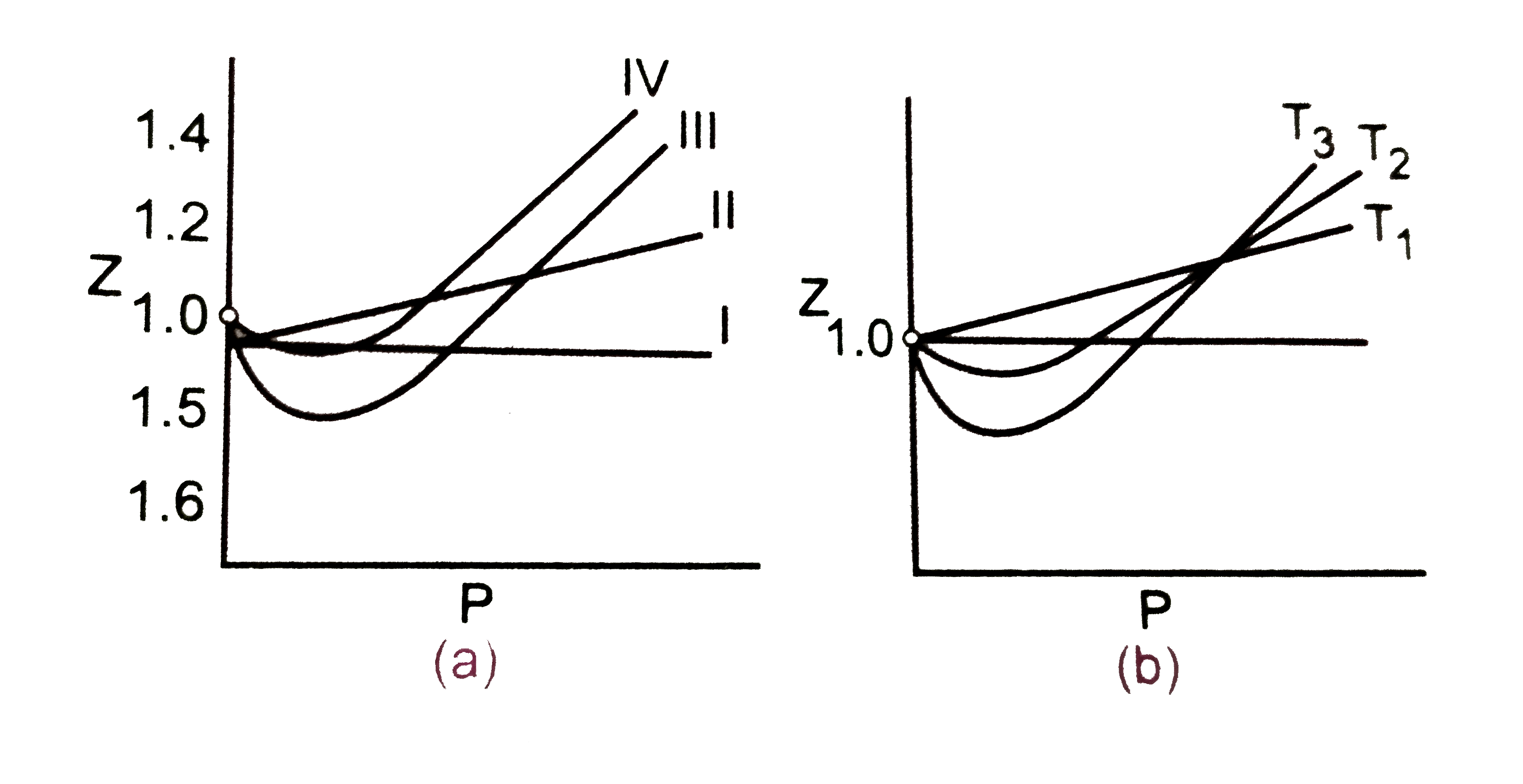
The gas which can be liquefied most easily is View SolutionQuestion 88
(JEE Adavanced 2014)
X and Y are two volatile liquids with molecular weights 10 g mol−1 and 40 g mol1 respectively. Two cotton plugs, one soaked in X and the other soaked in Y, are simultaneously placed at the ends of a tube with length L=24 cn as shown in the figure. The tube is filled with an inert gas at 1 atmosphere pressure and a temperature of 300 K. Vapours of X and Y react to form a product which is first observed at a distance of d cm from the plug soaked in X. Take X and Y to have equal molecular diameters and assume ideal behaviour for the inert gas and the two vapours.

The value of d in cm (shown in the figure), as estimated from Graham's law, is View SolutionQuestion 89
(JEE Adavanced 2014)
X and Y are two volatile liquids with molecular weights 10 g mol−1 and 40 g mol1 respectively. Two cotton plugs, one soaked in X and the other soaked in Y, are simultaneously placed at the ends of a tube with length L=24 cn as shown in the figure. The tube is filled with an inert gas at 1 atmosphere pressure and a temperature of 300 K. Vapours of X and Y react to form a product which is first observed at a distance of d cm from the plug soaked in X. Take X and Y to have equal molecular diameters and assume ideal behaviour for the inert gas and the two vapours.

The experimental value of d is found to be smaller than the estimate obtained using Graham's law. This is due to View SolutionQuestion 102
The diffusion coefficient of an ideal gas is proportional to its mean free path and mean speed. The absolute temperature of an ideal gas is increased 4 times and its pressure is increased 2 times.As a result, the diffusion coefficient of this gas increases x times. The value of x is........View SolutionQuestion 103
A closed tank has two compartments A and B, both filled with oxygen (assumed to be ideal gas). The partition separating the two compartments is fixed and is a perfect heat insulator. If the old partition is replaced by a new partition which can slide and conduct heat but does not allow the gas to leak across (Figure 2), the volume (in m3) of the compartment A after the system attains equilibrium is ............
 View Solution
View Solution
All Exercises from PRADEEP CHEMISTRY (HINGLISH) Class 11 CHEMISTRY STATES OF MATTER : GASES AND LIQUIDES
- PROBLEMS FOR PRACTICE
- CURIOSITY QUESTION
- ADVANCED PROBLEMS (FOR COMPETITIONS)
- TEST YOUR GRIP
- FILL IN THE BLANK
- CONCEPTUAL QUESTIONS (BEHAVIOUR OF REAL GASES AND VAN DER WAALS EQUATION
- CONCEPTUAL QUESTIONS (DIFFERENTIATING THREE STATES OF MATTER AND INTERMOLECULAR FORCES
- CONCEPTUAL QUESTIONS (KINETIC THEORY OF GASES, KINETIC ENERGY AND MOLECULE SPEEDS
- CONCEPTUAL QUESTIONS (LIQUEFACTION OF GASES AND CRITICAL TEMPETATURE
- CONCEPTUAL QUESTIONS (LIQUID STATE AND PROPERTIES OF LIQUIDS ) (VAPOUR PRESSURE, SURFACE TENSION AND VISCOSITY)
- CONCEPTUAL QUESTIONS (MEASUREMENT OF MASS, VOLUME, TEMPERATURE AND PRESSURE, GAS LAWS AND IDEAL GAS EQUATION
- QUESTIONS AND EXERCISES WITH ANSWERS
- ASSERTION AND REASON TYPE QUESTIONS
- LONG ANSWER QUESTIONS
- MATCHING TYPE QUESTIONS
- MULTIPLE CHOICE QUESTIONS-II
- NCERT EXEMPLAR PROBLEMS (MULTIPLE CHOICE QUESTIONS-I)
- SHORT ANSWER QUESTIONS
- ADDITIONAL QUESTIONS (VERY SHORT ANSWER QUESTIONS ) BEHAVIOUR OF REAL GASES AND VAN DER WAALS EQUATION
- ADDITIONAL QUESTIONS (VERY SHORT ANSWER QUESTIONS ) DIFFERENTIATING THREE STATES OF MATTER AND INTERMOLECULAR FORCES
- ADDITIONAL QUESTIONS (VERY SHORT ANSWER QUESTIONS ) KINETIC THEORY OF GASES, KINETIC ENERGY AND MOLECULAR SPEEDS
- ADDITIONAL QUESTIONS (VERY SHORT ANSWER QUESTIONS ) LIQUEFACTION OF GASES AND CRITICAL TEMPERATURE
- ADDITIONAL QUESTIONS (VERY SHORT ANSWER QUESTIONS ) LIQUID STATE AND PROPERTIES OF LIQUIDS (VAPOUR PRESSURE, SURFACE TEMSION AND VISCOSITY)
- ADDITIONAL QUESTIONS (VERY SHORT ANSWER QUESTIONS ) MEASUREMENT OF MASS, VOLUME, TEMPERATURE AND PRESSURE, GAS LAWS AND IDEAL GAS EQUATION
- ADDITIONAL QUESTIONS (SHORT ANSWER QUESTIONS) (DIFFERENTIATING THREE STATES OF MATTER AND INTERMOLECULAR FORCES)
- ADDITIONAL QUESTIONS (LONG ANSWER QUESTIONS)
- ANALYTICAL (QUESTIONA AND PROBLEMS) QUESTIONS
- ANALYTICAL (QUESTIONA AND PROBLEMS) QUESTIONS (PROBLEMS)
- COMPETITION FOCUS (BEHAVIOUR OF REAL GASES AND VAN DER WAALS EQUATION)
- COMPETITION FOCUS (DIFFERENTIATING THREE STATES OF MATTER AND INTERMOLECULAR FORCES)
- COMPETITION FOCUS (KINETIC THEORY OF GASES, KINETIC ENERGY AND MOLECULAR SPEEDS
- COMPETITION FOCUS (LIQUEFACTION OF GASES AND CRITICAL TEMPERATURE)
- COMPETITION FOCUS (LIQUID STATE AND PROPERTIES OF LIQUID)
- COMPETITION FOCUS (MEASUREMENT OF MASS, VOLUME, TEMPERATURE AND PRESSURE, GAS LAWS AND IDEAL GAS EQUATION
- COMPETITION FOCUS (MISCELLANEOUS)
- II. MULTIPLE CHOICE QUESTIONS
- III. MULTIPLE CHOICE QUESTIONS
- IV MATCHING TYPE QUESTIONS
- V MATRIX-MATCH TYPE QUESTIONS
- VI INTEGER TRPE QUESTIONS
- VII. NUMERICAL VALUE TYPE QUESTIONS
- VIII. ASSERTION-REASON TYPE QUESTIONS (TYPE-I)
- VIII. ASSERTION-REASON TYPE QUESTIONS (TYPE-II)
- PROBLEM
- SAMPLE PROBLEM

